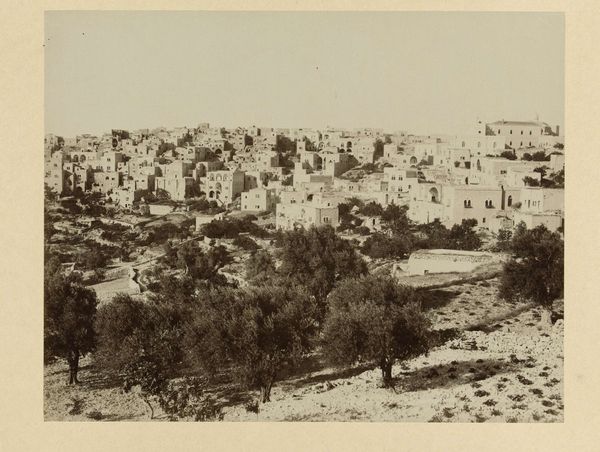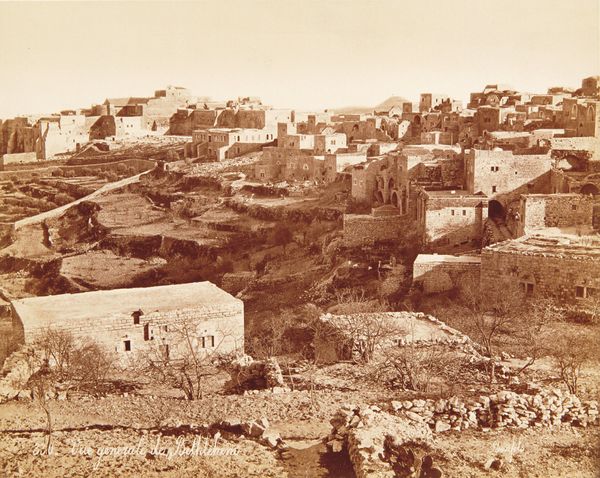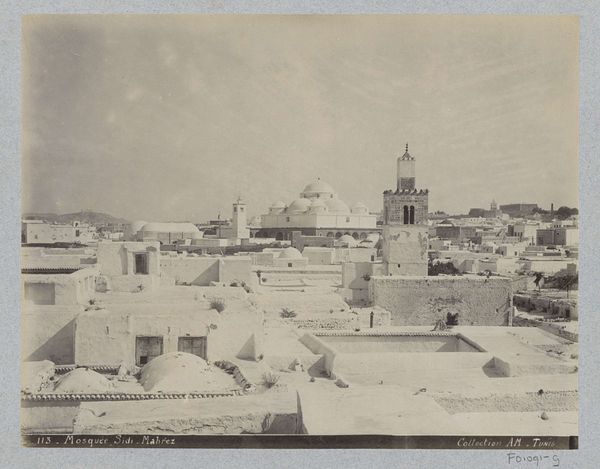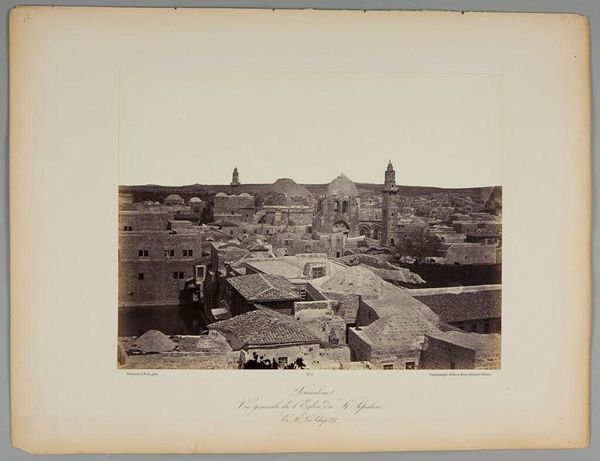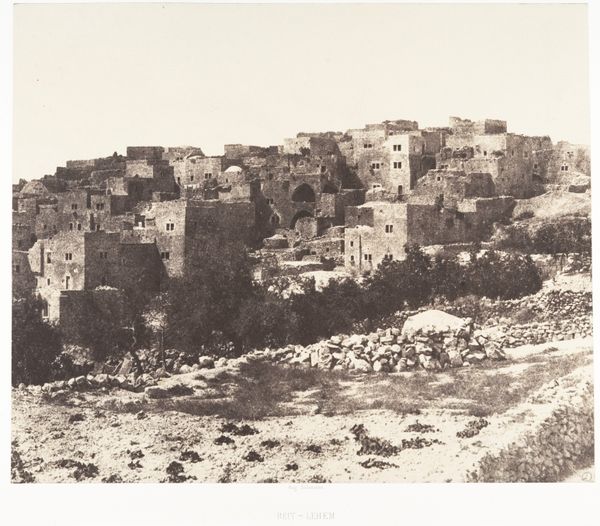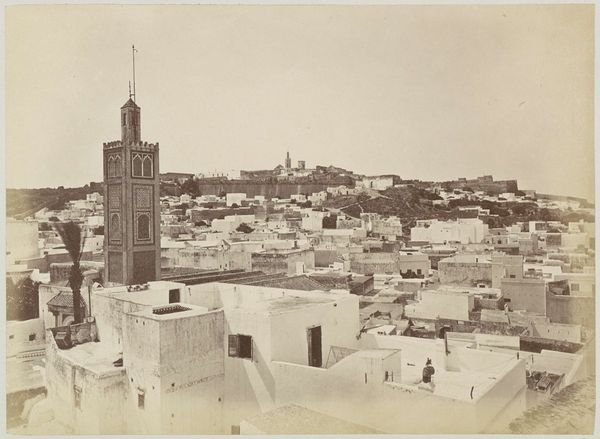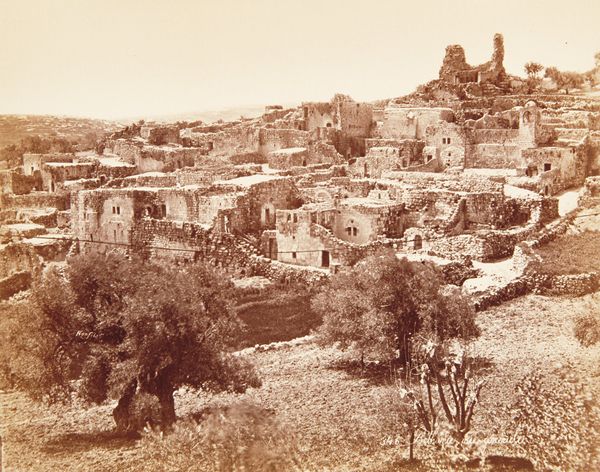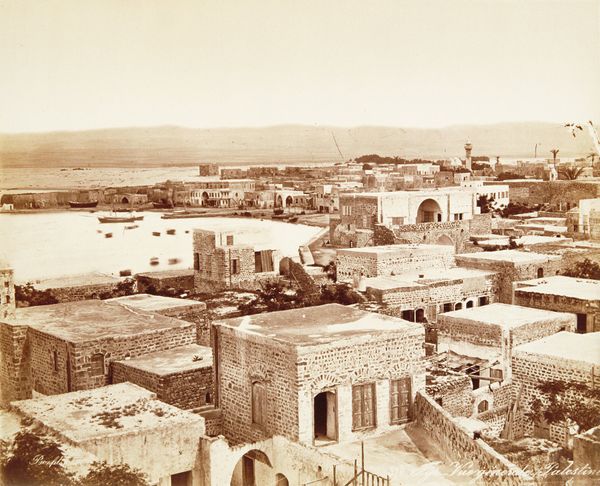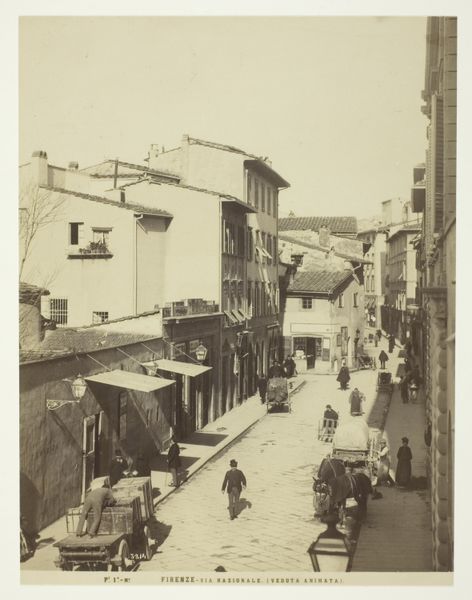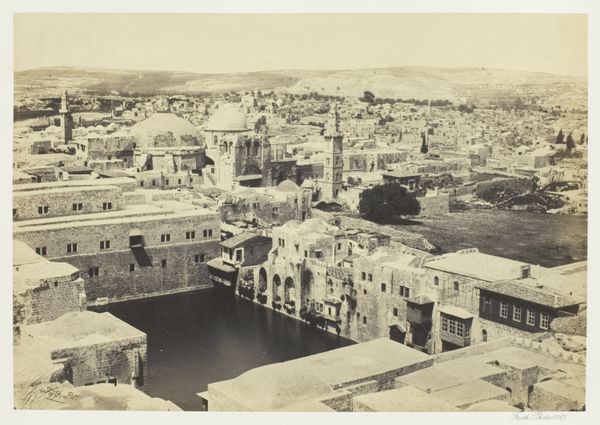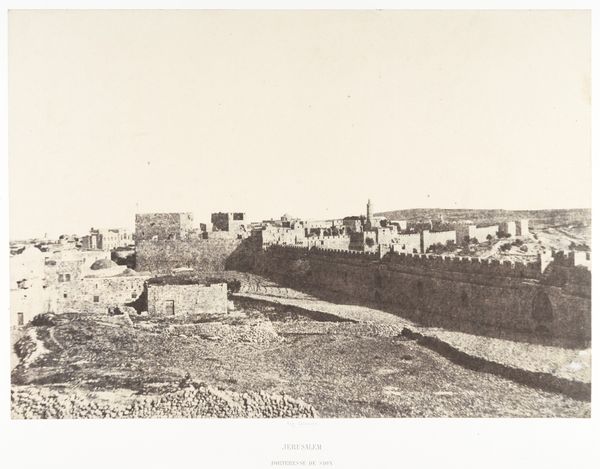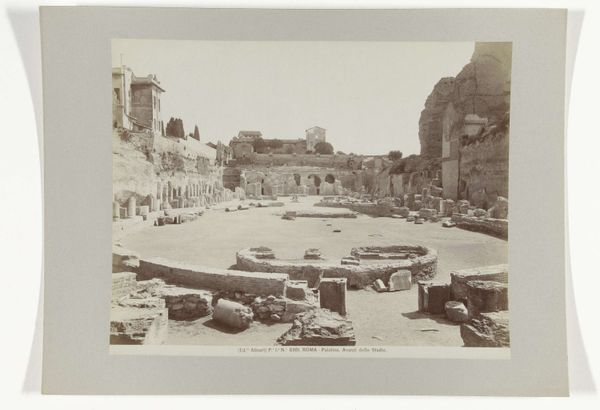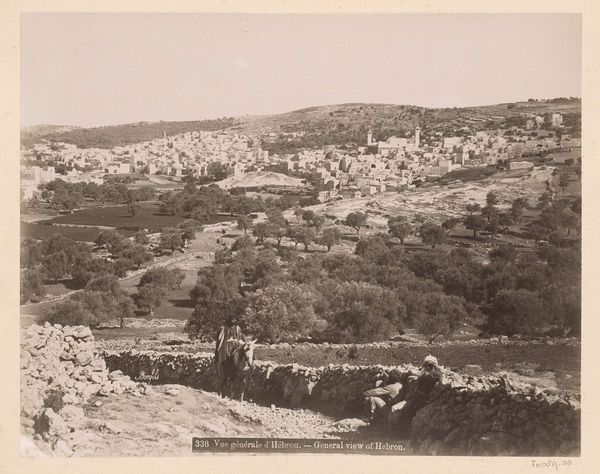
photography, gelatin-silver-print
#
landscape
#
outdoor photograph
#
photography
#
orientalism
#
gelatin-silver-print
#
monochrome photography
#
cityscape
Dimensions: height 82 mm, width 109 mm
Copyright: Rijks Museum: Open Domain
Editor: Here we have Johannes Lodewijk Heldring's gelatin-silver print, "Gezicht op Nazareth, Israël," from 1898. The sepia tones give it such a sense of age. There's also this imposing, almost severe feeling from the tightly packed buildings and the stark light. What resonates with you most when you look at it? Curator: The density itself becomes a powerful symbol, doesn't it? Think about what "Nazareth" might represent. The packed architecture mirrors the weight of history and faith pressing down through generations. Consider how the eye is drawn upwards toward the church tower, a vertical aspiration amidst horizontal complexity. What emotions does that ascent evoke for you? Editor: I suppose a feeling of hope, or maybe… reaching beyond the everyday? It's contrasted against what feels like a maze of dwellings. Curator: Precisely. Notice how the photograph’s perspective emphasizes that labyrinthine quality. The "Holy Land" became a contested landscape, politically and spiritually. Can you see how that complexity, that layering, mirrors the layered claims and counter-claims over sacred space? The image then acts as a visual representation of cultural memory and ongoing tensions. Editor: So it's not just a landscape, but almost a map of cultural and religious ideas? The buildings, the way they're arranged... they're all telling a story. Curator: Exactly. Heldring captures more than just the physical place. He captures its symbolic weight. By focusing on the town’s visual elements, we understand the layers of meaning ascribed to Nazareth by the artist, then and today. Editor: This photograph reveals how much depth an image can hold, more than meets the eye at first glance! Curator: Indeed! Now we are equipped to view with context.
Comments
No comments
Be the first to comment and join the conversation on the ultimate creative platform.
